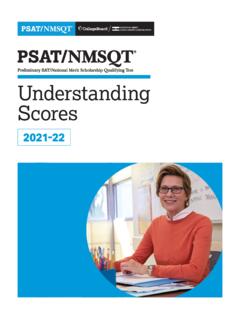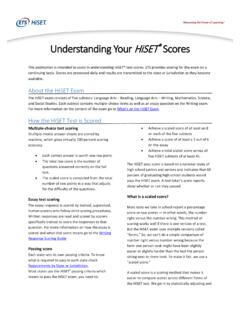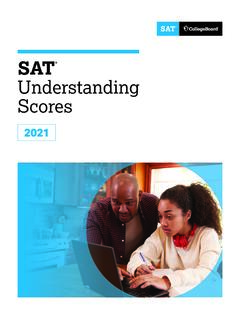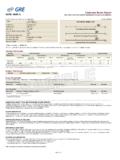Transcription of National curriculum assessments at key stage 2 in England ...
1 Contact: Press office: 020 7783 8300 Public enquiries: 0370 000 2288 National curriculum assessments at key stage 2 in England , 2019 (revised) 13 December 2019 This publication provides revised statistics for key stage 2 (KS2) National curriculum assessments . It updates the provisional statistical release, in particular revising the disadvantage measures following the inclusion of new data on pupils in care of a local authority, and additionally includes pupil progress between key stage 1 (KS1) and KS2 and breakdowns by pupil characteristics and local authority.
2 It is accompanied by tables in Excel and underlying data files which provide statistics at National , local authority, local authority district and constituency level. 65% of pupils reached the expected standard in reading, writing and maths (combined) and 11% pupils reached the higher standard In 2019, 65% of pupils reached the expected standard in all of reading, writing and maths, up from 64% in 2018. The proportion of pupils reaching the higher standard in 2019 was 11%, up from 10% in 2018. Attainment in reading, writing and maths in 2018 and 2019 is not directly comparable to earlier years because of changes to the writing TA frameworks in 2018.
3 The gap between disadvantaged pupils and others has remained at a similar level compared to last year The gap between disadvantaged pupils and others, measured using the disadvantage gap index, remained at a similar level compared to last year. There was a small increase of (from to ) since 2018 but an overall decrease of since 2011 (Figure 1). Distribution of school attainment for reading, writing and maths achieving the expected standard is similar compared to last year Figure 2 shows how the distribution of attainment in reading, writing and maths at school level has changed since 2016.
4 In 2019, the distribution is broadly similar compared to last year. Although the peak of the distribution represents a lower proportion achieving the expected standard than the peak last year, there were more schools at this level, and relatively fewer at lower levels of attainment. Figure 2: Distribution of percentage of pupils reaching expected standard in reading, writing and maths at school level Contact: Press office: 020 7783 8300 Public enquiries: 0370 000 2288 Content 1. Attainment in reading, writing and maths (combined).
5 4 2. Attainment by subject .. 4 3. School level attainment and progress .. 5 4. Attainment and progress by school type .. 6 5. Attainment and progress by pupil characteristics .. 8 6. Local authority attainment and progress .. 16 7. Accompanying tables .. 19 8. Further information is available .. 21 9. National Statistics .. 21 10. Technical Information .. 22 11. Get in touch .. 22 3 About this release This publication provides revised 2019 key stage 2 National curriculum assessment results for pupils in schools in England at National , regional and local authority.
6 Local authority district and constituency level statistics can be found in the underlying data. It provides additional information to that in the provisional key stage 2 publication published on 5 September 2019. Pupils take National curriculum assessment in year 6, at the end of KS2, when most pupils will reach age 11 by the end of the school year. Pupils take tests (commonly referred to as SATs) in reading, maths and grammar, punctuation and spelling (GPS) and receive a teacher assessment (TA) in writing. This publication provides figures on pupil progress between key stage 1 (typically age 7) and key stage 2 (typically age 11), a summary of school level results provided in the performance tables, breakdowns of attainment and progress by pupil characteristics and local authority.
7 In this publication The following tables are included in the publication: KS2 National and local authority tables (Excel .xlsx) Underlying data and metadata (Excel .xlsx) The accompanying quality and methodology document provides information on the data sources, their coverage and quality and explains the methodology used in producing the data. Feedback We are changing how our releases look and welcome feedback on any aspect of this document at 4 1. Attainment in reading, writing and maths (combined) (Table N1a) The combined reading, writing, and maths measure uses the reading and maths test results along with the outcome of the writing teacher assessment (TA).
8 To reach the expected standard in all of reading, writing and maths, a pupil must achieve a scaled score of 100 or more in reading and maths tests and an outcome of 'reaching the expected standard' or 'working at greater depth' in the writing TA. Together, these subjects give a broad measure of pupil attainment. To reach the higher standard, a pupil must achieve a scaled score of 110 or more in the reading and maths tests, and an outcome of working at greater depth in the writing TA. In 2019, 65% of pupils reached the expected standard in all of reading, writing and maths, while 11% of pupils reached the higher standard1.
9 This is up from 64% and 10% reaching the expected standard and higher standard respectively for 2018. Attainment in reading, writing and maths is not directly comparable to earlier years because of changes to writing TA frameworks in 2018. 2. Attainment by subject (Table N1b) To reach the expected standard in reading, maths and GPS tests, a pupil must achieve a scaled score of 100 or more. In writing TA a pupil must be awarded an outcome of reaching the expected standard or working at greater depth to be counted as reaching the expected standard.
10 The Working at greater depth judgement is not included in the science teacher assessment framework, so pupils must be rated as reaching the expected standard only in science TA to be counted as reaching the expected standard. To reach the higher standard in a test subject, a pupil must achieve a scaled score of 110. To reach the higher standard in writing TA, a pupil must achieve an outcome of working at greater depth . Attainment increased across all subjects in 2019, with the exception of reading. Table 1 and Figure 3 summarise attainment in the key stage 2 subjects.
















